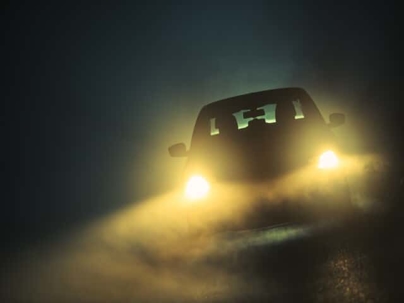There’s no argument. The evidence shows that driving at night is significantly more dangerous than driving during the day. While it may seem hard to believe, nighttime car accidents are not only more common (given the number of people on the road) but also more likely to result in tragedy. Allow us to explain why you (probably) shouldn’t drive at night.
More Accidents
Although there are far fewer drivers out after dark, nighttime accidents make up about half of all car accidents. With 6,000,000 total crashes per year, that means around 8,200 American motorists are hurt every night between 11 PM and 5 AM.
Not only are there more crashes, but they tend to be much deadlier. Typically, nighttime car accidents are four times deadlier than accidents during the day.
Perhaps most terrifying of all is that there’s no single cause for these accidents; they are the result of a combination of several high-risk factors working in perfect disharmony.
Low Visibility
The biggest hazard to driving at night is the lack of natural light. Many drivers take sunlight for granted, not realizing how much it affects their visibility. Electric lights make us forget just how dark the night really is. Any driver can be taken by surprise when they realize that they can only see a few hundred feet in front of their vehicle.
Nighttime drivers are almost completely reliant on their headlights to guide the way. However, most low-beam headlights have a maximum illuminating distance of 200ft. If a pedestrian or an animal were crossing the road, most drivers wouldn’t be able to see them until it was too late.
For example, picture a car moving through town at 45 mph. At the edge of the headlight’s range, the driver makes out a pedestrian on a late-night jog, about 200ft out. They slam the brakes, but a car moving at 40mph needs around 500 feet to come to a safe stop. Yet all of this could have been avoided if the driver had normal visibility.
Adding to the issue is that headlights tend to lose their effectiveness over time. The covers become cloudy, and the bulbs fill with soot. This means the already ineffective 200ft range could be cut down to 100ft or even a mere 75ft.
This is why it’s incredibly important to avoid speeding at night. During the day, law enforcement may tolerate someone going five miles over the speed limit. At night, even that seemingly small speed difference can cause significantly more damage to both pedestrians and drivers in the event of a crash. Often, the difference between a minor accident and one causing serious injuries is a difference of just 5 miles per hour.
Blinding Headlights
Overly bright headlights can also be a problem. The infamous “blue headlights” are everywhere now. They come standard on hundreds of thousands of vehicles, yet even this enhanced visibility can contribute to further accidents.
Blue headlights use a certain kind of light ray that’s great for illumination but can be potentially dangerous. Most light rays bounce off our eye, but blue light penetrates through the lens and hits the back of the eye. This can cause a moment of temporary blindness as our eyes try to readjust to the light. The National Highway Traffic Safety Administration suggests that blue headlights also cause a greater windshield glare and can be a significant contributor to nighttime crashes.
Other studies show these blue headlights may even be responsible for lasting ocular fatigue, inadvertently making it more difficult for drivers to keep their eyes open.
Drowsy Drivers
At some point in their lives, most people have gotten behind the wheel when they were probably too tired to drive. This takes an already dangerous situation (driving at night) and combines it with poor motor skills and a lack of visibility. It’s no wonder that some estimates claim drowsy driving is responsible for 5% of all car accidents.
A tired driver’s eyes tend to flutter as they struggle to stay awake. This puts them in great danger as their visibility is already restricted by headlights, and then it's cut in half again when someone is struggling to stay awake. It’s almost like trying to drive with a blindfold on, stealing peaks from under the edge of the fabric.
Even worse is that a drowsy driver can enter a state of “micro-sleep” while behind the wheel of the car. This means that they’re just awake enough to manage basic motor skills. This means that they’re much less likely to notice traffic signals and stop signs. In some cases, a drowsy driver can be just as dangerous as a drunk driver.
DUIs
The vast majority of DUIs happen at night. Moreover, DUIs are both one of the more frequent and more deadly car accidents in the US. On average, 30 Americans are killed by drunk drivers every night.
While there are many laws and programs in place to prevent drunk driving, it remains a tragic issue across the country. Worst of all, there’s no way to tell if an oncoming driver is intoxicated until it is too late.
Drunk drivers are more likely to cause deadly head-on collisions and side-impact collisions (T-bones). Once on the road, there’s no way to stop them. The lives of both pedestrians and sober drivers are in their hands.
It may not seem fair, but the best way to avoid falling victim to one of these terrible accidents is to avoid driving after 11 PM, if at all possible. The earlier you can get inside, the safer you’ll be.
If you suffered serious injuries in a late-night car accident, we are here for you. If you’d like an experienced Pensacola personal injury attorney from The Watson Firm to evaluate your case, please send us an email or call (850) 607-2929.

